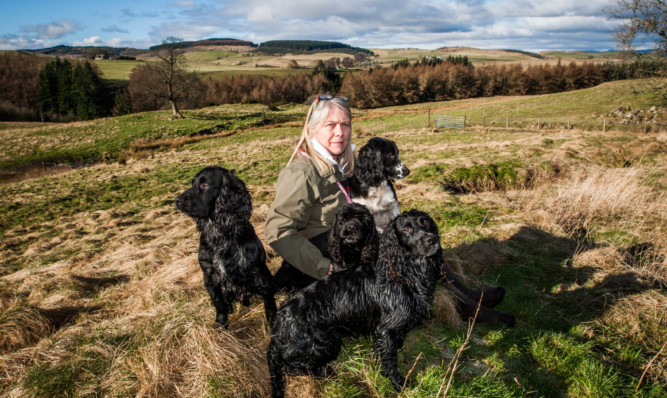The welfare of working dogs continues to be put at risk by a total ban on tail docking, a rescue centre has said.
Carol Begg, who runs Perthshire Gundog Rescue, near Kinross, says adult amputations are often risky procedures and are not always successful first time.
She is urging the public to respond to a consultation by the Scottish Parliament that could see the reintroduction of partial tail removal for sporting dogs, such as spaniels.
Tail docking was banned in Scotland in 2006 but the practice remains legal for working dogs in England. Adult tail amputations are more complex procedures, requiring general anaesthetics.
Carol, who currently has two dogs awaiting adult tail amputation as a result of injury, said damaged tails do not always heal properly, requiring further treatment.
She said: “It’s important because of the number of adult dogs that are having to have tail amputations. We’ve had six (needing amputations). Every shoot we go on with a full-tailed spaniel ends up covered in blood. It’s horrific to see.
“We have two waiting (for) amputations. Drew damaged his as a youngster. His behaviour has completely changed he’s now aggressive towards other dogs, he’s withdrawn and the pain in his tail bothers him so much he’ll lie and shake.
“He won’t move his tail the way he should because he’s frightened he’ll bang it. It’s not just the damage to the tail but it’s the psychological affect the trauma has on them.
“You can’t keep a dog out of cover and the movement of a spaniel’s tail means it’s an accident waiting to happen.
“Dogs were born with tails, and they need them but we are not talking about cutting the whole thing off. It’s about being sensible and about the welfare of animals.
“Some dogs have had not just one tail amputation, but have had to have two or three and have ended up with a stump so short that it’s putting the dog’s life at risk because you can only take the tail so short.”
Bert Burnett, a retired gamekeeper with more than 50 years of experience in the field, said many old Scottish bloodlines had been lost as a result of the ban.
The 69-year-old said: “A lot of the lines that were built up over the last 100 years are gone because no one in their right mind wants a working dog with a long tail.
“It’s a chance I wouldn’t be wanting to take. If I needed another spaniel I’d go down to England because I know what would happen (to a dog with a full tail) and I don’t want to be responsible for a wee dog getting hurt.”
